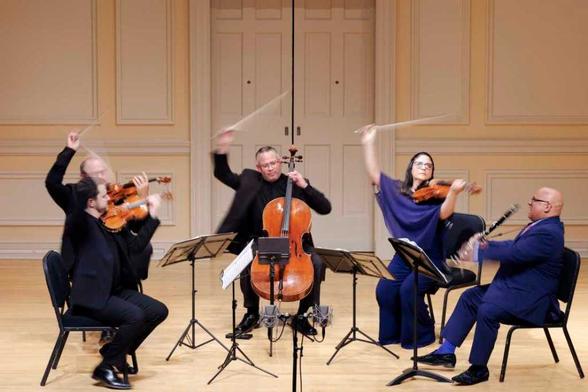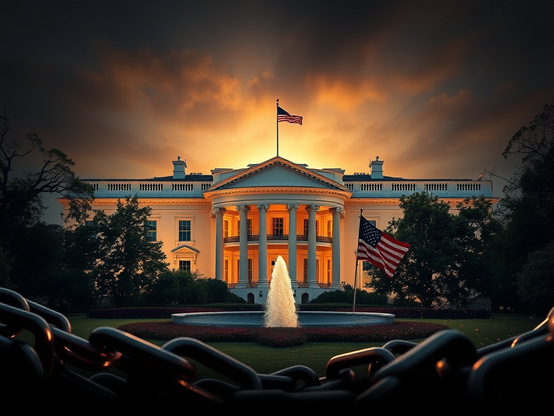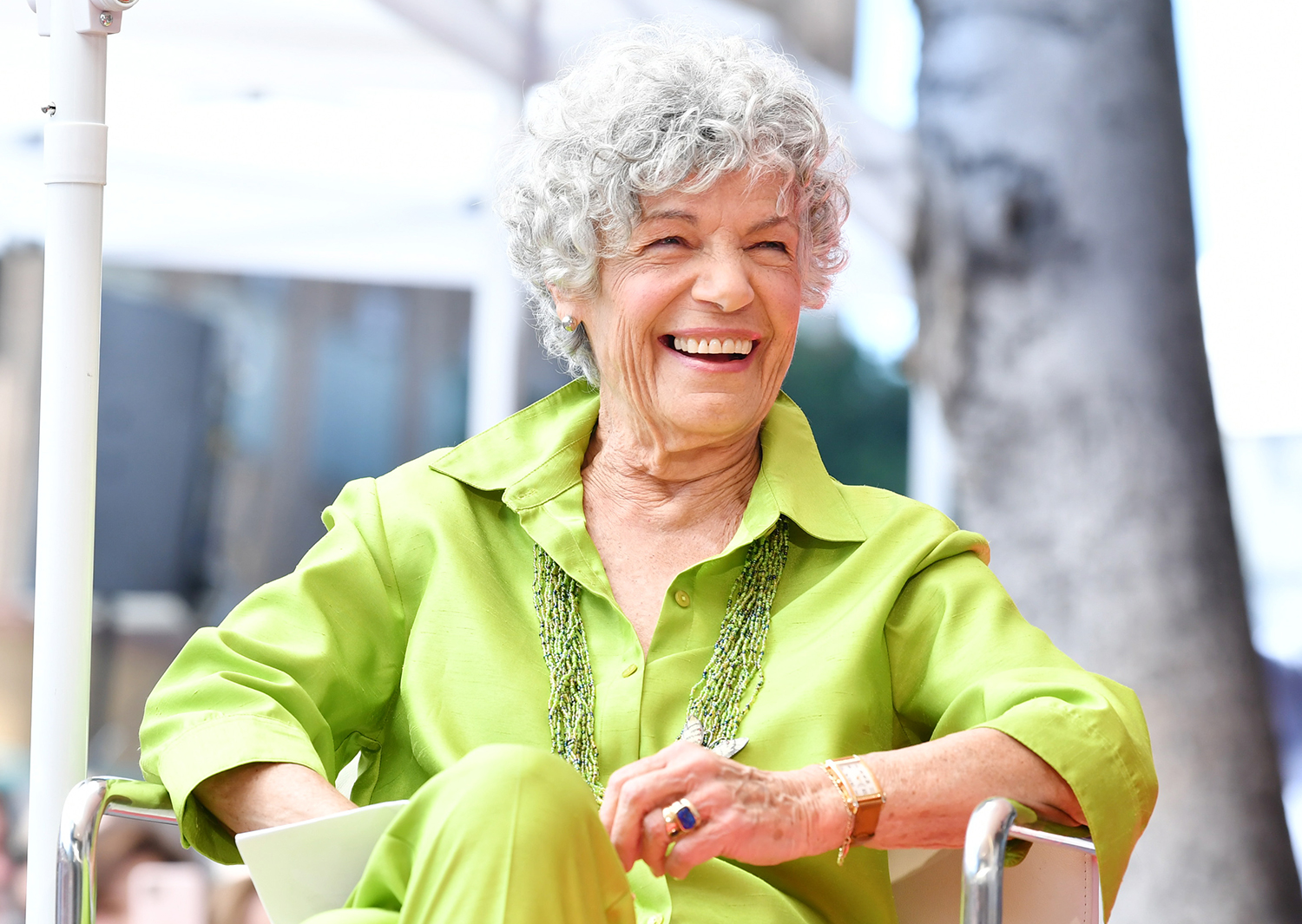One of music’s best kept secrets celebrates 100 years, quietly – NPR
Music
One of music’s best kept secrets celebrates 100 years, quietly
The story of Coolidge Auditorium, at the Library of Congress, is one of American ingenuity, cultural integrity and a century of free concerts.
October 25, 20258:18 AM ET, Heard on Weekend Edition Saturday
Tom Huizenga 6-Minute Listen Transcript
The Dalí Quartet, accompanied by Ricardo Morales on clarinet, performs during the Library of Congress’ Stradivari concert in Coolidge Auditorium in 2023. The Library was given a rare set of Stradivarius instruments in 1935.
Shawn Miller/Library of Congress
The year is 1925. The Great Gatsby is published, the jazz age is swinging, and on October 28th, a new concert hall opens at an unlikely spot — the Library of Congress, in Washington D.C. If only its cream-colored walls could talk. For 100 years, performers of all stripes have graced the Library stage, from classical music luminaries like Béla Bartók and Igor Stravinsky to Stevie Wonder, Audra McDonald and Max Roach. Today, it remains one of the capitol city’s most beautiful, best sounding and perhaps best kept secrets.
The idea for a concert hall at the Library of Congress did not stem from congress. It came from philanthropist Elizabeth Sprague Coolidge — and one bespoke piece of bipartisan legislation. “She was indefatigable and intrepid,” says Anne McLean, senior producer for concerts at the Library, “a remarkable woman, six feet tall, a brilliant pianist.” McLean is sitting with me on the stage, overlooking the empty auditorium. To mark the centennial, celebratory concerts and commissions have been heard in the hall all year. But not now. The government shutdown has forced the hall to close its doors, and unless a deal is reached before Tuesday, it’ll be closed on the anniversary itself.
Coolidge was born into a wealthy Chicago family in 1864. She studied music, traveled abroad, married a Harvard-trained orthopedic surgeon and, in 1924, came to Washington to establish a foothold in the nation’s capitol. She approached Carl Engel, the Library’s music chief, about the possibility of adding a small concert hall to the Library’s voluptuous — and voluminous — Thomas Jefferson building, designed after the Paris opera house and completed in 1897. You can’t see the hall from the outside, as it’s tucked inside the building’s Northwest Courtyard.
In 1924, Elizabeth Sprague Coolidge wrote her first check to the Librarian of Congress, Herbert Putnam, to begin the construction of a new auditorium.
Eager to get started, Coolidge wrote a check for $60,000 to the Librarian of Congress, Herbert Putnam, on Nov. 12, 1924. And yet there was no legal mechanism in place for a civilian to make such a monetary gift to the U.S. government. Congress worked quickly, taking only a little over a month to pass a bill allowing such a contribution.
It took less than six months to build the hall itself — the intimate, 485-seat Coolidge Auditorium, with its warm precise acoustics. “There are a lot of secrets to it,” McLean says. “The back wall of the auditorium is slightly shaved to be concave and extremely responsive to string sound. Underneath the stage is hollow. But that hollowness is a factor, as is the cork floor, which was very unusual for its time.” McLean says the sound blossoms in the hall. Keen to spread the sound far and wide, Coolidge even had the building wired for the relatively new medium of radio. She added to her initial sum to establish a fund for the commissioning of new music. Engel dubbed her “The Fairy-God-Mother of Music.”
Construction of Coolidge Auditorium, at the Library of Congress, began in May, 1925. It was finished in time for the very first concert on Oct. 28 of that year. Library of Congress
Coolidge was well-connected and fiercely advocated for music. In 1944, she took to the local Washington airwaves with another bold idea. “I could wish for music, the same governmental protection that is given to hygiene, education or public welfare,” she said over WTOP. “How wonderful, if we could have in the cabinet, a secretary of fine arts.”
Coolidge never got her wish, but what she had already created was arguably more important — a living, breathing concert hall that serves as a cultural beacon — preserving history and cultivating new music through commissions.
The Martha Graham Dance Company performs the world premiere of Aaron Copland’s
Appalachian Spring on the stage of the Coolidge Auditorium on Oct. 30, 1944. Elizabeth Sprague Coolidge Foundation Collection / Library of Congress
Perhaps the most famous commission became one of America’s most iconic pieces of music. Aaron Copland‘s ballet Appalachian Spring, written for dancer and choreographer Martha Graham, received its world premiere at Coolidge Auditorium on Oct. 30, 1944. “I think people knew what they were hearing,” McLean says. The ballet would win the Pulitzer prize for music the following year, along with the New York Music Critics Circle Award. It’s hard to imagine a full ballet produced on Coolidge’s modestly-sized stage.
Continue/Read Original Article Here: One of music’s best kept secrets celebrates 100 years, quietly : NPR
#100Years #AaronCopland #CoolidgeAuditorium #Culture #FreeConcerts #Ingenuity #LibraryOfCongress #MarthaGraham #Music #NationalPublicRadio #NPR #TomHuizenga #WeekendEdition








